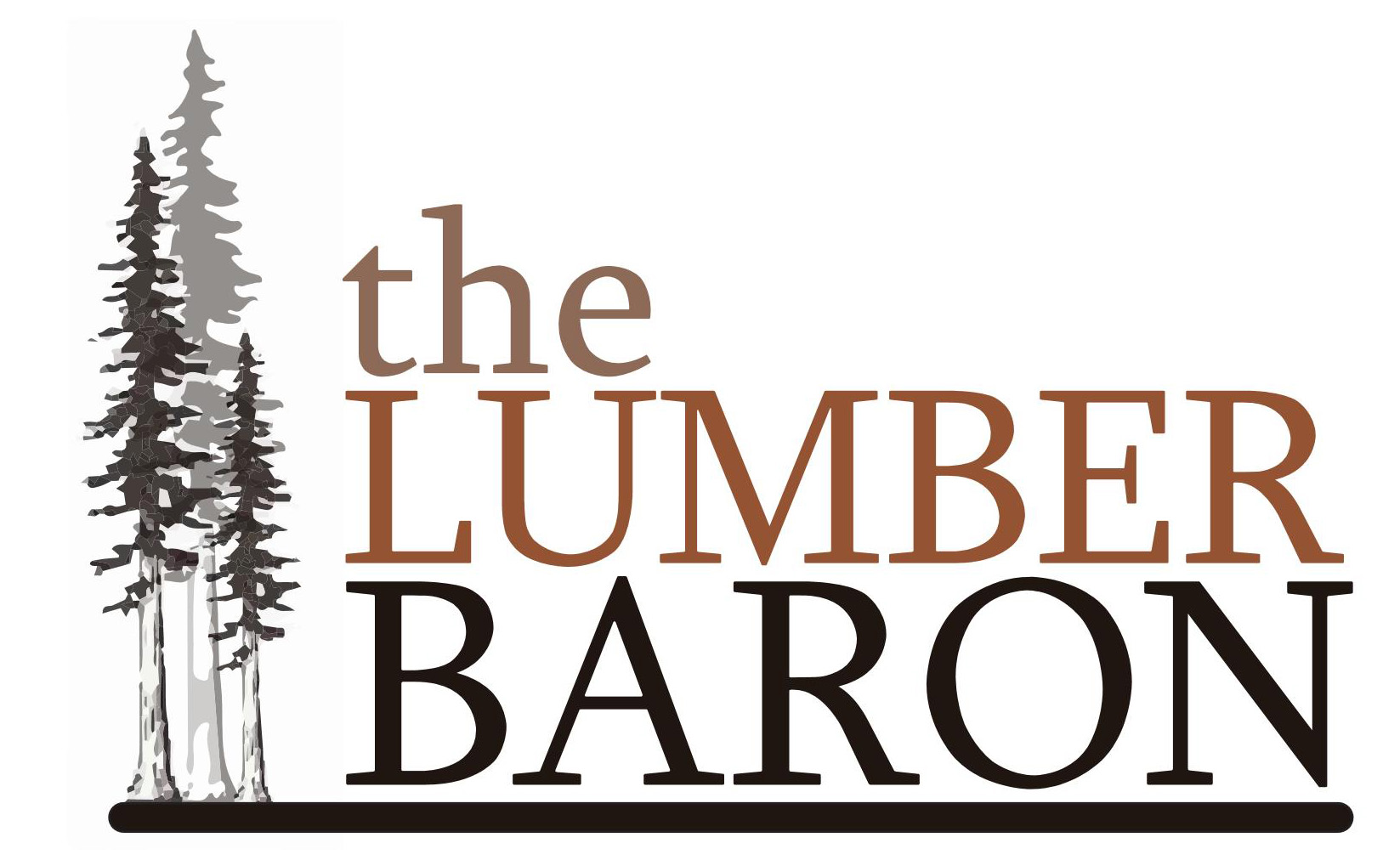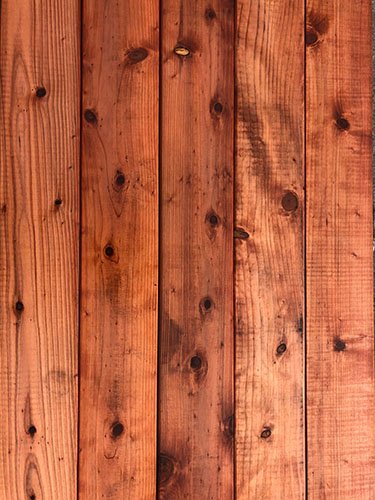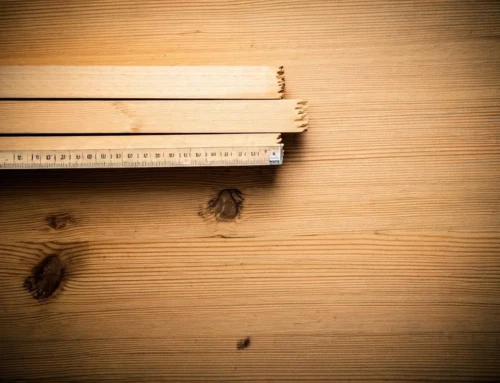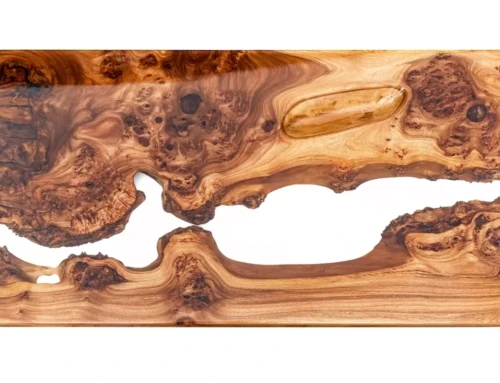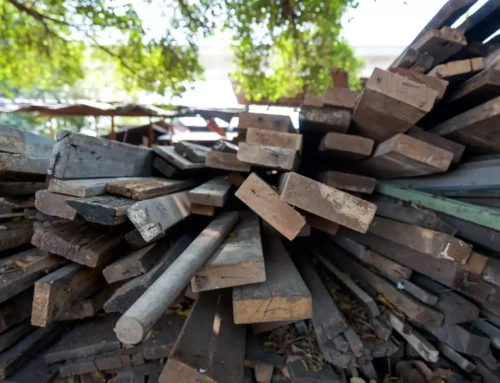Cost Determinations of Redwood Lumber
How much does redwood lumber cost? Like much in life, you get what you pay for. Redwood Lumber has varying degrees of quality that dramatically affect how the price you will pay for the material you order. Characteristics such as heartwood vs sapwood, knot content, grain orientation, wet vs dry, and size all determine how much redwood lumber will cost you. We’ll go into each of these in a little bit more detail.
Sapwood Redwood Vs. Heartwood Redwood Lumber
It’s very important to know the difference between sapwood and heartwood. Many people think they are one and the same. The difference could be the matter of your project lasting 25 years or longer, or 25 months or less.
Heartwood Redwood Lumber
Typically, heartwood redwood lumber was sold in lumber yards and gave redwood an outstanding reputation amongst builders for both interior and exterior applications. Sapwood on the other hand, is the white colored portion of a redwood tree, you find just underneath the bark layer. Its purpose is the protect the tree in it’s infancy, producing sap to entrap potential invasive species like termites. This sapwood portion makes up a smaller and smaller percentage of the redwood tree’s living membrane as the tree becomes more established. When redwoods were first logged the small sapwood portion of the large trees was simply discarded. As the diameter of the tree logged began to shrink, the sapwood percentage increased. In order to make money on the smaller trees it became clear to the mills they would need to sell the sapwood lumber they were producing. Thus the sapwood redwood lumber market began.
Sapwood Redwood Lumber
Easily distinguishable by it’s white color, sapwood (especially in wet weather with dirt contact) can begin to rot out in as quickly as five or six months. The sapwood lacks the tannins found in redwood heartwood that give redwood heartwood its reddish color. Termites simply don’t like these tannins and often leave to find another food source. These same tannins repel fungi and other organisms that cause rot and decay in most other wood species. Below is a picture of a piece of redwood lumber that perfectly captures this.
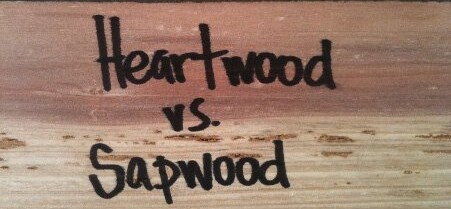
Notice how the termites eat the sapwood right up to the red heartwood portion of the piece of lumber. As shown in this picture, when presented with the option of eating the tannin filled heartwood or trying to find another meal, the termites often choose the ladder.
Unfortunately, many uninformed homeowners ask their contractors simply for a redwood fence, deck, or siding, and what they receive is a cheap, inferior sapwood product. When purchasing redwood lumber, you should make sure to ask for an all heart product. As you might expect, sapwood redwood lumber is less expensive than its heartwood counterpart. However the longevity you will get out of using heartwood redwood lumber over sapwood, makes it a no brainer.
Redwood Lumber Heartwood Grades
Knot content is another large factor in determining how much redwood lumber will cost. As a rule of thumb the more knots found in the material, the less expensive it will be. Branches of a redwood tree form the knots you find in redwood lumber. Many customers like the presence knots. If you do too you’re in luck. When compared to knot free redwood, the knottiest redwood lumber costs cost about half. See our Redwood Grades for pictures and descriptions of the 5 heartwood redwood grades we stock.
Redwood Lumber Grain Orientation
Another factor that effects the cost of redwood lumber is the grain is orientation on the wider face of the piece of lumber. Flat grain lumber is a much more common cutting practice. It is created when the face of the boards are cut parallel to the annual growth rings of the tree. It creates a broad, wide, prominent grain pattern of the wide face of the board. Cutting lumber this way to maximize the yield from smaller circumference logs. The lumber is perfectly acceptable in today’s construction.
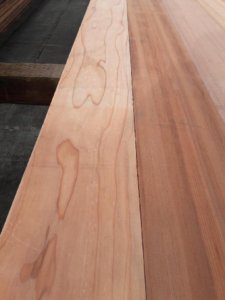
Flat Grain All Heart Redwood
Cutting lumber so the growth rings run along the wide face of the board results in vertical grain lumber. The consistency of the grain makes the lumber more stable and all but eliminates the risk of the grain lifting over time. Vertical grain requires a larger diameter log and is much more rare given today’s smaller log circumferences. Dense vertical grain is even more rare and qualifies as a piece that averages 8 or more growth rings per inch. Expect to pay 20% more for vertical grain lumber, 60% or more for dense vertical grain.
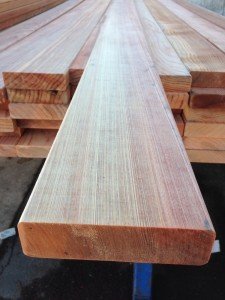
Dense Vertical Grain Redwood
Wet Vs. Dry Redwood Lumber
When first cut, redwood lumber’s moisture content can be as high as 45%. As the molecular water content begins to escape the wood and evaporate, the lumber often shrinks. It can also warp and twist during this drying out period. In order to make redwood lumber more stable before selling, it is can be put into a kiln or placed outside to air dry, naturally over time. In applications such as siding, paneling and furniture, it is paramount the lumber doesn’t shrink. Although the use of a kiln produces dry lumber in a much faster time period, the oils and tannins can dry too quickly, causing stress fractures in the lumber. The process of air drying lumber takes much longer but the process is more natural and easier on the final product. Using either process the lumber will dry to a point where shrinkage or warping will longer be of concern. Eventually the moisture content will acclimate to the relative humidity of the area where it’s installed or stored. In our Richmond facility that range is anywhere from about 10%-17%. Price wise you should expect to pay about 20-30% more for dry redwood lumber.
Redwood Sizing
The size of the redwood boards is another factor in determining the cost of lumber. All things equal, smaller common sizes like 2×4 and 2×6 are the least expensive lumber items per board foot. Wider items like 10″ and 12″ boards or beams such as 6″x12″ and 8″x8″ are much more rare, and thus command a premium. Also, make sure you provide a lumber list that is reflective of how you will use the boards. The more information you provide the lumber yard the better. Longer lengths like 16′ and 20′ are more rare and also more expensive. If your cutting lumber to 4′ increments for stairs but are asking for 16′ lengths, there’s a very good chance your paying a premium you wouldn’t have if you asked for 8′ lengths instead.
Frequently Asked Questions
1. What’s the price range for redwood lumber?
Prices depend on grade and size. You might pay around $3 per board foot for lower grades, while top-quality Clear Heart redwood lumber can go over $10. The cleaner and more heartwood you want, the more it’ll cost.
2. Why is redwood more expensive than other types of wood?
Redwood trees grow slowly and aren’t as widely available. Heart redwood lumber comes from the inner part of the tree and naturally stands up to moisture and bugs, which makes it a bit more costly than softwoods like redwood cedar.
3. How do redwood lumber grades affect the cost?
Grade makes a big difference. Clear Heart is the cleanest and most expensive, with no knots and full heartwood. Construction Common has more knots and may include sapwood, which brings the price down. It comes down to what your project needs.
4. What should I expect to pay for redwood 2×8 boards?
Redwood lumber 2 by 8 boards can vary in price, but bigger boards usually cost more. If you’re going with Clear Heart, you’ll pay a premium. If you’re just framing or using it where looks don’t matter as much, lower grades will save you some cash.
5. Is redwood more expensive than redwood cedar?
Yes, most of the time. Redwood—especially the better grades—lasts longer and looks more refined. Redwood cedar is still a solid choice, but if you want something that’s going to last and look good doing it, redwood is often the go-to.
6. Where’s the best place to get redwood lumber?
Skip the big box stores if you’re after variety and quality. Local redwood lumber suppliers like us carry everything from Clear Heart to more budget-friendly grades, including all the popular sizes like redwood 2×6 and 2×8.
7. Is paying more for Clear Heart redwood worth it?
If your project will be weathered—like a front porch, deck, or patio furniture—it’s usually worth the added expense. Clear Heart redwood is beautiful, holds its beauty throughout the years, and requires less upkeep in the long run.
